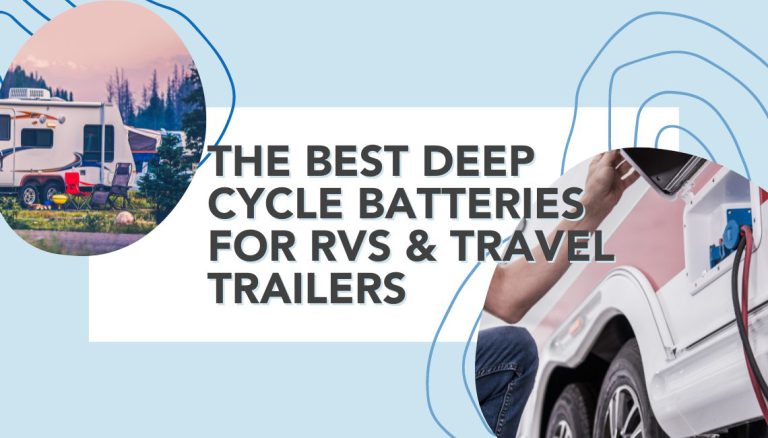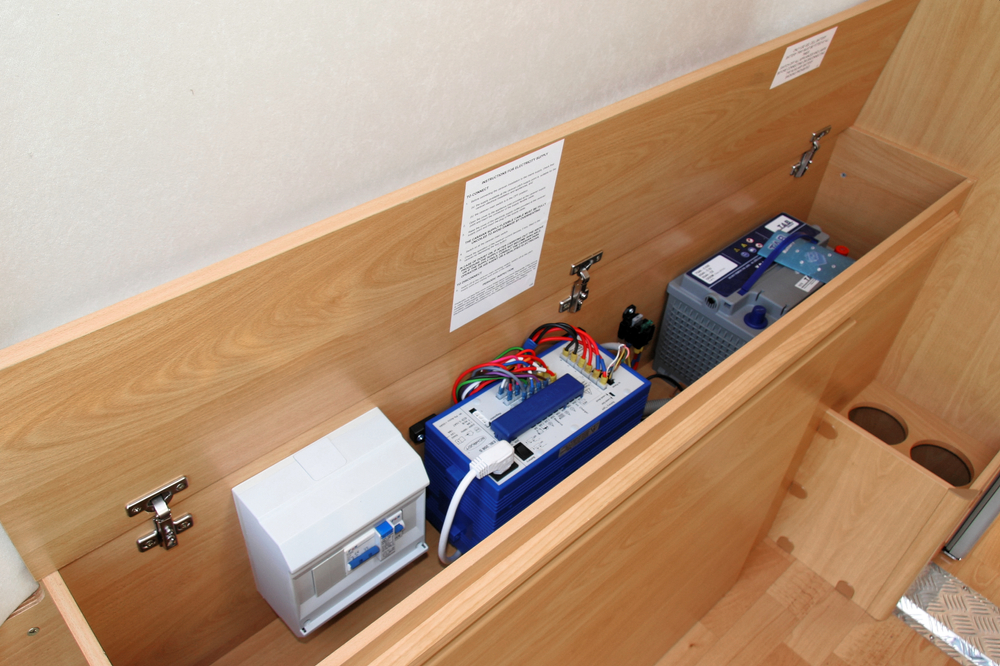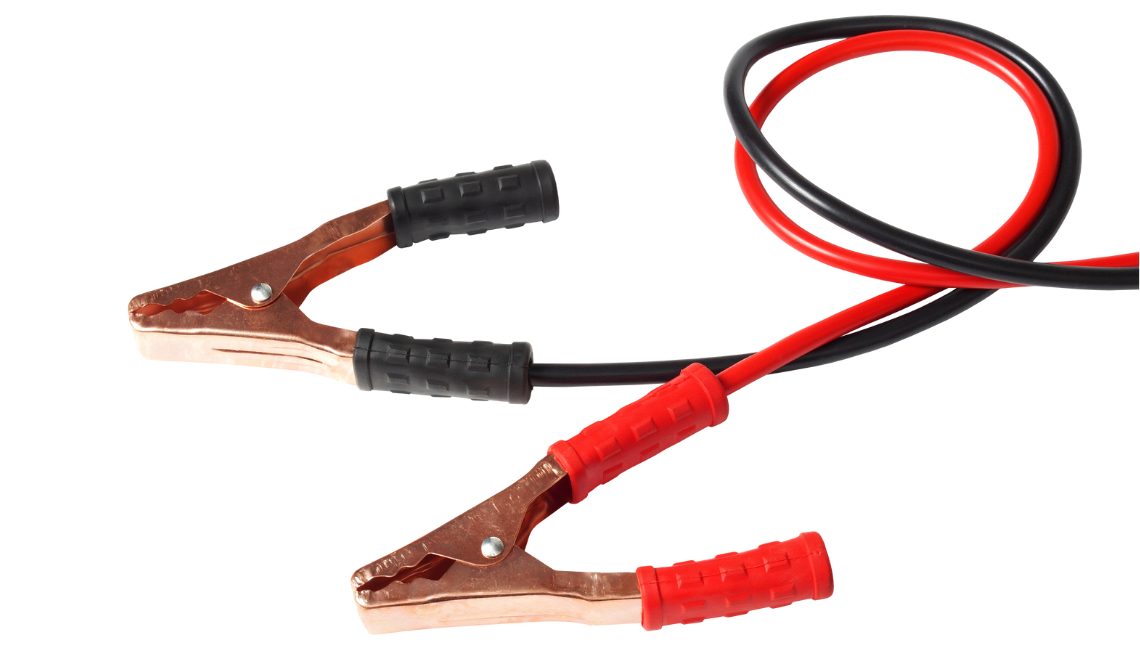
When you operate your rig, you’ve got a few batteries at work there. One is the chassis or starting battery. The others are the house or deep cycle batteries. The house batteries operate everything that runs in your RV when it’s parked – lights, appliances, and things like that. The starting battery is almost identical to the one used in a car, except larger. This is because the RV engine is larger, so its battery needs a larger CCA (Cold Cranking Amps) rating.
House batteries differ from starting batteries, in that the house battery is designed to provide energy over long periods of time–somewhat like a marathoner, while engine batteries are meant to provide a quick burst of energy, just to get the engine going–somewhat like a 100-meter dash.
What Are Deep Cycle Batteries?
These batteries go through what is known as deep cycling, as they are usually fully discharged before they are recharged again. Deep cycle batteries are essential for providing dependable power to your rig, something you’ll be super thankful to have when you’re stuck at that Walmart parking lot overnight. They are especially important if boondocking is your thing– gotta get that power from somewhere and it won’t be from a campsite!
These batteries are designed to hold up to even the most energy-guzzling appliances, such as your RV air conditioner, microwave, cooktop, & more. Knowing the different types of deep-cycle batteries is important to ensure you choose the right one for your rig. They can be classified into four categories: Lithium-ion, AGM, gel, and Flooded lead acid.

Types of Deep Cycle Batteries:
- Lithium-ion
- Absorbed glass mat (AGM)
- Gel
- Flooded lead-acid
#1- Lithium Ion
If you’re using any of the appliances above in your rig, a lithium-ion battery should be top on your list. Being able to use power and recharge quickly is key if you’re doing any cooking, TV streaming, or running A/C in your RV. While it is the most expensive option up front, it’s for good reasons–
Lithium-ion batteries can accept extremely fast charge rates, charging at about a 5x faster rate than most AGM batteries. They are extremely lightweight and compact, can be completely discharged with no damage, and require no maintenance. Lithium-ion batteries also have the longest lifespan of all deep-cycle batteries, lasting upwards of 2,000-5,000 cycles. They can be recharged in about an hour when completely dead and have no discharge memory, so they are almost 100% efficient.
#2- Absorbed Glass Mat (AGM)
AGM RV batteries, a.k.a. absorbed glass mat batteries, were first developed for the aircraft industry in the 1980’s and were originally designed to withstand large vibrations and extreme weather. If you’ve ever spent time on the road in an RV, you know that vibrations and unpredictable weather are bound to happen!
AGM batteries are made of fiberglass mats that hold the liquid electrolyte in place, making them a spill-free battery if they get tipped over. Unlike lithium-ion batteries, these are not affected by freezing temperatures. These batteries require no maintenance, can be discharged up to 80%, and are extremely durable. Absorbed glass mat batteries are best used for shorter periods of time off the grid as they have a shorter lifespan. Be extra careful not to overcharge, as these batteries can be easily damaged.
#3- Gel
Seeing as flooded lead-acid batteries do have a slue of disadvantages, gel batteries were created to try to combat some of those problems. The electrolyte in this battery is gelled making spills less likely and preventing off-gas from regular use. Gel batteries require no maintenance and have a decent charge efficiency, but keep in mind that like AGM batteries, these can also be ruined if overcharged.
A specific charging profile is required for gel batteries. Always remember — charge low and slow!
#4- Flooded Lead-Acid
Flooded lead-acid batteries are made of lead plates that have been submerged in liquid electrolyte, hence why they are referred to as “flooded”. These are the least expensive of all deep-cycle RV batteries, although they are super heavy, have a low usability capacity, and are prone to overheating. Flooded lead-acid batteries require regular maintenance and will most likely require a monthly top-off of electrolytes.
These batteries also release hydrogen, a poisonous gas, while being charged and must be frequently cleaned to remove any corrosive battery acid. Dealing with flooded batteries can be dangerous in instances where a battery leaks, cracks, or tips over, so handle them with extreme caution. They must be stored fully charged and kept out of freezing temperatures or you risk the possibility of the whole thing being destroyed. Despite the many disadvantages, flooded lead-acid batteries are pretty tolerant of overcharging and have an indefinite shelf life if maintained properly.
Marine batteries-
RV marine batteries are a hybrid of your starting battery and your deep cycle battery, but most people recommend them only as deep cycle batteries. They’re less expensive than a dedicated deep-cycle battery, but not necessarily as good quality.
Most RV batteries bathe the lead in an acid/water solution, which you need to fill up every so often because with every charge, the battery loses a little of the solution. To fix this problem and have maintenance-free batteries, manufacturers sealed the batteries completely and just left a small vent on the side.
Generally, RV batteries and marine batteries are interchangeable. Just make sure your marine battery has a larger reserve capacity and a slow discharge. Also, check that your marine battery has enough reserve to power your RV and everything you want to use inside it between charges.

How to Get the Most out of Your Deep Cycle Battery
There are a few things you can do to maximize the lifespan of your deep cycle battery for RV. Cycle the battery down to 50% discharge before recharging it every time, instead of recharging the battery when it’s down to 20% of its charge. The sooner you can recharge your deep-cycle rv battery, the better.
On the flip side, you don’t want to undercharge your battery. Make sure it gets recharged to 100% before unplugging and using it again. Undercharging can also age your RV deep cycle battery and causes sulfation, which is when the sulfate material crystalizes on the discharged portions of the battery plates and render them useless. There are a few ways to check the charge of your battery, though none of them are ideal. You can shell out a few hundred bucks for a meter to measure the charge, or go by battery voltage and use a digital display.
Buying a Deep Cycle RV Battery
The goal, of course, is to get the most power for the least cost when buying your deep-cycle RV battery. Power for these batteries is measured in either amp-hours (AH) or reserve capacity (RC). AH refers to how many amps the battery will put out over a 20-hour period, and RC refers to how many minutes the battery can support a 20-amp output. A battery with a larger AH or RC rating has more capacity than a smaller one.
Generally speaking, the larger the size of a deep-cycle RV battery, the greater the AH and RV…and the more power they have. Keep in mind, you can also join batteries together and wire them in parallel to get more amp hours, but keep the voltage the same.
What to look for-
- Capacity – Your battery’s capacity will be measured in AH, or ampere hours. Ampere hours measure the amount of current the battery can deliver over a certain period of time. A higher AH means your battery has the ability to store more power and work longer. Just remember this will affect the weight and size of your battery.
- Depth of discharge – This is usually a percentage that shows the specific amount of power discharged by the battery. If you’re going to use a lead-acid battery, know that the life cycle and depth of discharge are related. Deeper individual cycles also mean the battery will have fewer cycles overall.
- Voltage – The refers to the potential electrical difference. In most cases, deep cycle and starter batteries have 12v DC (direct current). In some cases, RV owners combine 6v batteries in a series to build their own 12v batteries to use.
- Charging – How will your batteries be charged? Do you need a power inverter? Will you be using a generator, solar power, or shore power to charge your batteries?
- Temperature changes – How will your battery do in low and high temperatures? You’ll want one that can provide heat in winter and air in summer, so make sure it can withstand at least some temperature differences. Also, ask how your battery does in humid conditions, in case you’re visiting areas where that’s an issue.
- Ability to withstand vibration – You also want to investigate the overall quality of your battery. A good RV battery will be able to withstand shocks and vibrations so it’s not damaged in transit.
Which Battery is Right for my RV?

The right RV battery is different for everyone and depends on how you use your rig. If you simply move from your house to a campground, and hook up to an electricity and sewer system, then a marine battery will do just fine. Your RV most likely came with this kind. If you find yourself frequently needing off the grid power, however, you will need something with a larger capacity. You will want to upgrade to a deep-cycle battery.
Here are a few deep cycle RV batteries worth checking out:
- The XS Power Deep Cycle Battery
- The Ampere Time LiFePO4 Deep Cycle Battery
- The Universal Sealed AGM Battery
- The Optima Yellowtop Battery
Marine RV Batteries to check out:
- The VMAX857 AGM Marine Deep Cycle battery is a popular choice and slowly discharges over an average of 4-9 hours running time with only a 50-60% discharge. It uses tin-lead alloy in the inner plates, rather than calcium-lead alloy
- The Optima 8016-103 D34M BlueTop Starting & Deep Cycle Marine Battery is highly recommended, and reviewers say it can function as both a deep cycle and a starting battery. It’s fifteen times more resistant to different vibrations compared to other marine batteries and offers a quick recharge time.
- The Battle Born Batteries 12-v 100 AH LiFePO4 Deep Cycle Battery – this battery works on RVs and boats and other off-grid power systems. It’s versatile and lightweight.
Maintenance Tips
- If using a flooded lead-acid battery, be sure to keep the water levels up (especially in warmer weather!)
- Remove the caps on your battery to check water levels frequently to ensure the battery plates are fully covered
- If your water level is low, fill with distilled water to the appropriate level
- To clean your batteries, put a teaspoon of baking soda in a cup of water, let it dissolve, and then spray it on the battery. This will bubble away the build-up. Use a hose to spray this off.
When disconnecting a battery, remove the negative charge first. When reconnecting, connect the positive terminal first.
Battery capacity is reduced as temperatures fall. On a cold morning, don’t be shocked to find your battery dead.
At -22 degrees Fahrenheit, battery capacity drops by 50%. Higher temperatures, like 122 degrees Fahrenheit, will increase battery capacity by 12%. A partially-discharged battery can freeze, but a fully-charged battery cannot.
If you can keep your battery charged during winter, then keep it in your rig. If not, disconnect it, and store it in a warm place, until you are ready to get back on the road again. Inactivity is not good for batteries. Do not buy new ones to save for later– if you do have to buy them before you are ready to use them, make sure to keep them charged!
Final Thoughts
The Best RV battery all depends on what kind of camper you are…do you enjoy dry camping? Or do you enjoy mostly hanging out at campgrounds with RV hookups? As you can see, batteries come at a variety of price points and power, so knowing what you want to use yours for is the first step to picking a great one!
Looking for more tips? Check out these articles on the blog:
- The 7 Best RV Batteries at Walmart
- What’s the Best RV Battery for Boondocking or Dry Camping?
- 5 Things you Need to Know about your RV Battery
Like this article? Share it with your friends. Tweet it, pin it, like it and email it.
This post contains affiliate links. RVshare may receive compensation if you make a purchase after clicking on a product link.






